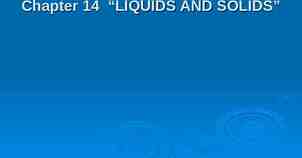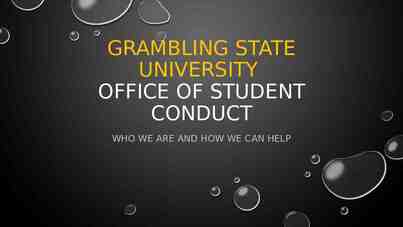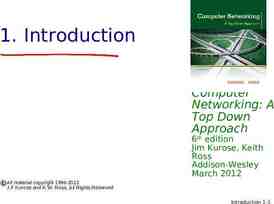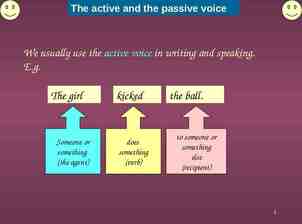Chapter 10 The Role of Housekeeping in Hospitality Operations
22 Slides690.82 KB

Chapter 10 The Role of Housekeeping in Hospitality Operations Managing Front Office Operations Tenth Edition

Communicating Room Status I Each night, a front desk agent or property management system produces an occupancy report that lists rooms occupied that night and guests who are expected to check out the next day. The executive housekeeper consults the occupancy report and schedules occupied rooms for cleaning As guests check out of the hotel, the front desk notifies housekeeping so that guestrooms can be cleaned and readied for arriving guests. Ten-day and three-day forecast reports indicate how many rooms are projected to be occupied each day, helping the executive housekeeper prepare staff schedules. Slide 2

Communicating Room Status II At the end of each work shift, the housekeeping department prepares a housekeeping status report based on a physical check of each room. The housekeeping status report is compared to the occupancy report, and any room status discrepancies are investigated. Keeping room status information up to date requires close coordination/cooperation between the front desk and housekeeping staffs. In an automated room-status system, housekeeping and front office staff have instantaneous access to room status information. Slide 3

Occupancy Report Prepared by: Front desk Indicates: Rooms occupied that night Guests expected to check out next day Used by: Housekeeping to schedule next day’s room cleaning Slide 4

Housekeeping Status Report Prepared by: Housekeeping Indicates: Current status of each hotel room Used by: Front desk to assign rooms to arriving guests Slide 5

Housekeeping and Maintenance In most midsize and large lodging operations, housekeeping personnel report to the rooms division manager, while engineering and maintenance staff constitute a separate division. Differing lines of accountability can become a barrier between housekeeping and maintenance staffs. Teamwork is essential between housekeeping and maintenance staffs, and managers should devote attention to improving the working relationship between the two staffs. Slide 6

Communicating Maintenance Work Room attendants are counted on to recognize and report guestroom deficiencies or malfunctions so that they can be addressed before they lead to guest dissatisfaction. Slide 7

Potential Guestroom Maintenance Problems Sleep set Heating/air conditioning TV, radio, phone Bedspreads Lighting Door Toilet Vanity and tub Towels Bathroom walls and door Water temperature Ventilation Slide 8

Types of Maintenance Routine maintenance General upkeep Preventive maintenance Inspection Minor corrections Work-order initiation Scheduled maintenance Slide 9

Routine Maintenance Routine maintenance activities are those that relate to (1) the general upkeep of the property, (2) occur on a regular (daily or weekly) basis, and (3) require relatively minimal training or skills. Routine maintenance activities occur outside of a formal work order system; no specific maintenance records are kept for these activities. Examples of routine maintenance activities: sweeping carpets, washing floors, cleaning windows, cutting grass, cleaning guestrooms, shoveling snow, replacing burned-out lightbulbs. Slide 10

Preventive Maintenance Preventive maintenance consists of three parts: (1) inspection, (2) minor corrections, and (3) work order initiation. For many areas of the hotel, housekeeping personnel perform inspections in the normal course of their duties. Most minor repairs often can be handled while the room attendant is cleaning the guestroom. Slide 11

Scheduled Maintenance Scheduled maintenance tackles problems and needs that are beyond the scope of a minor correction. Scheduled maintenance activities are initiated based on a formal work order (or similar document). Slide 12

Equipment Engineering personnel keep data files and history records on all equipment. Equipment data files contain: Technical data Manufacturer’s information Item’s cost Special instructions Warranty information Storage of manuals/drawings Equipment history records contain: Logs of inspection/maintenance performed Slide 13

General Housekeeping Responsibilities Guestrooms Corridors Public areas (lobbies, public restrooms) Pool and patio areas Management offices Storage areas Linen and sewing rooms Laundry room Back-of-the-house areas Slide 14

Additional Housekeeping Responsibilities at Some Properties Meeting rooms Dining rooms Banquet rooms Convention exhibit halls Hotel-operated shops Game rooms Exercise rooms Slide 15

Planning the Work of the Housekeeping Department Area inventory lists Frequency schedules Performance standards Productivity standards Equipment and supply inventory levels Slide 16

Area Inventory Lists Planning the work of the housekeeping department begins with creating inventory lists of all items within each hotel area that will need housekeeping’s attention. Area inventory lists ensure that the rest of housekeeping’s planning activities address every item that housekeeping is responsible for. Area inventory lists are long and detailed. Separate inventory lists may be needed for each different type of guestroom. When preparing an inventory list for a guestroom, managers should follow the sequence in which room attendants will clean items and supervisors will inspect items; this enables the executive housekeeper to use the lists as the basis for developing cleaning procedures, training plans, and inspection checklists. Slide 17

Frequency Schedules Deep-cleaning tasks are listed on frequency schedules that indicate how often the tasks should be performed. Tasks on frequency schedules should be transferred to a calendar plan and scheduled as special cleaning projects. Deep cleaning of guestrooms should coincide with low occupancy periods if possible. Deep cleaning should be coordinated with the maintenance department’s extensive repair work in guestrooms. Slide 18

Performance Standards Performance standards are required quality levels of performance. Performance standards state not only what must be done, but how the job must be done. Performance standards are the key to consistency. The most important aspect of developing performance standards is to gain consensus on how cleaning and other tasks should be carried out. Performance standards should be communicated through ongoing training programs. Inspection helps ensure that performance standards are met. The executive housekeeper should review the housekeeping department’s performance standards at least once a year and make appropriate revisions as necessary. Slide 19

Productivity Standards Productivity standards determine the acceptable quantity of work to be done by employees. Productivity standards vary in relation to the unique needs and requirements of each hotel and each type of hotel (economy, mid-market, luxury). Productivity standards should be set only after a hotel has been operating for a while. It is a challenge to balance performance standards and productivity standards; quality and quantity check and balance one another. Slide 20

Equipment and Supply Inventory Levels Employees must have the necessary equipment and supplies to get their jobs done. A hotel’s purchasing system must consistently maintain the necessary amounts of items in housekeeping inventories. There are two types of housekeeping inventories: recycled and non-recycled: — Non-recycled inventories – Recycled inventories Cleaning supplies Linens Guest supplies (small Housekeeping equipment items) Guest supplies (equipment) Purchase ordering system Par number The minimum quantity is the fewest number of purchase units that should be in stock at any time; the maximum quantity is the greatest number of units that should be in stock at any time. Slide 21

Supervisor Dilemma The state of the economy has prompted a trend to eliminate middle managers, including housekeeping supervisors. The challenge if a hotel eliminates housekeeping supervisors is to make sure guestrooms still meet the hotel’s cleaning standards. Most hotels do not eliminate room inspections entirely, just reduce them (inspecting from one to five rooms per room attendant per week). If a hotel eliminates housekeeping supervisors, the job descriptions of room attendants are changed to make the attendants responsible for the cleanliness, readiness, and status updates of their rooms. Their pay may be adjusted as well, or bonuses may be paid for exceeding quality standards. Some hotels retain one supervisor in order to be a trainer to room attendants; others designate room attendants to train. Hotels that eliminate housekeeping supervisors often give room attendants the responsibility of keeping guestroom status up to date. If a hotel wishes to cut back or eliminate its housekeeping supervisory staff, it should involve its room attendants in the design of the new program. Slide 22






